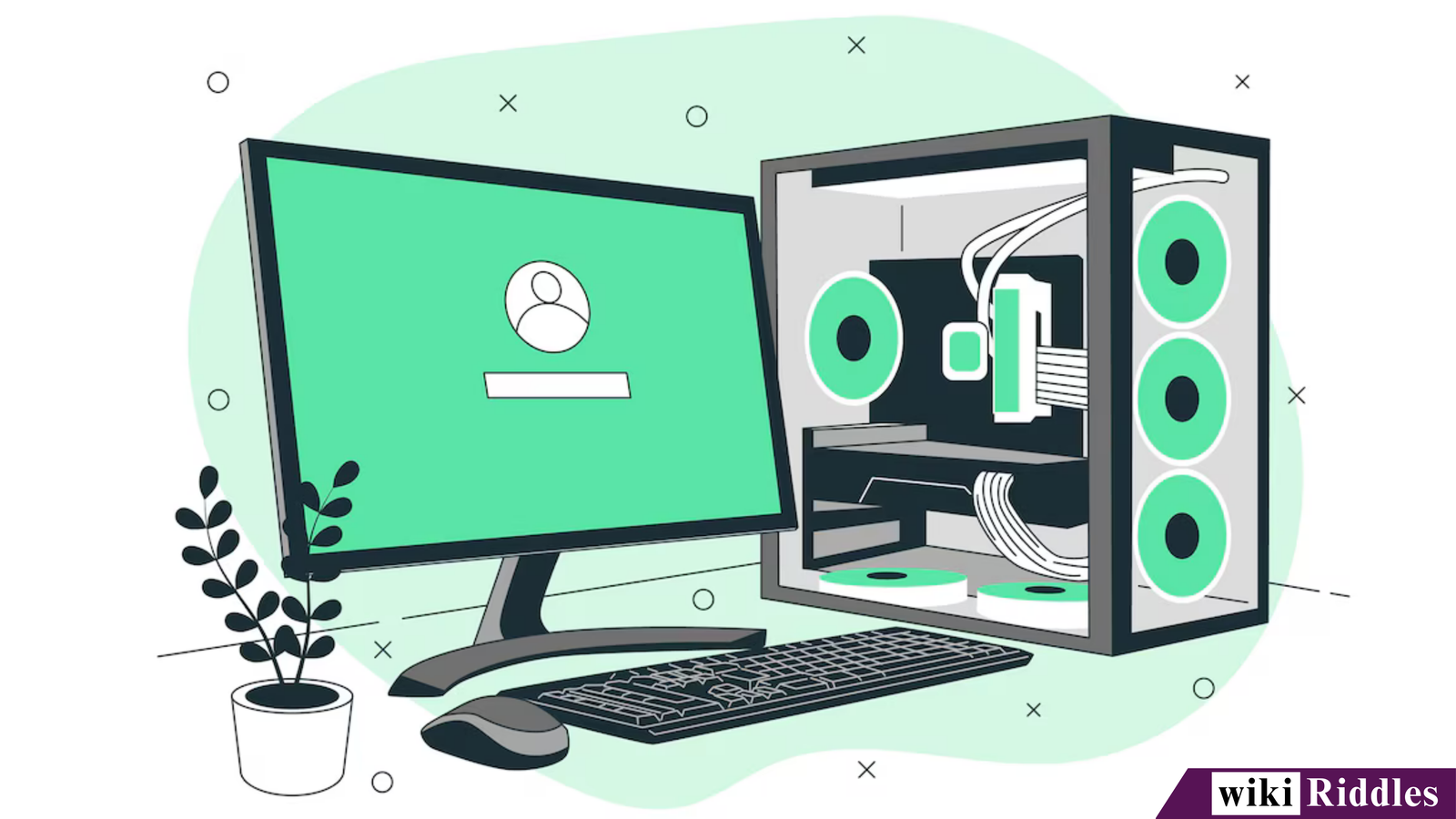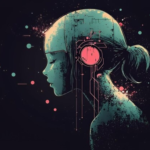Have you ever come across a riddle that makes your brain do somersaults? Well, how about combining that with something you use every day—your computer? Computer riddles are an exciting way to challenge your thinking while staying entertained. But what exactly are computer riddles, and why should you care about them? Let’s dive in and discover the fun and learning hidden behind these clever brain teasers.

200+ “Computer” Riddles With Answers
Binary Puzzles
- Riddle: I consist only of two digits but can represent any number. What am I?
Answer: Binary code. - Riddle: I start with a 1, and for every digit added to my right, my value doubles. What am I?
Answer: A binary number. - Riddle: When I shift to the left, I multiply by two; when I shift to the right, I divide by two. What operation am I?
Answer: Bitwise shift. - Riddle: I’m the number system computers speak but humans don’t. What am I?
Answer: Binary system. - Riddle: In a digital circuit, I can be true or false, 1 or 0. What am I?
Answer: A bit. - Riddle: I’m made up of ones and zeroes, and can store numbers, letters, or symbols. What am I?
Answer: ASCII code. - Riddle: My value flips from 0 to 1 and back in a single step. Which logic gate am I?
Answer: NOT gate. - Riddle: Two of me produce a one, but only if both of us are one. What am I?
Answer: AND gate. - Riddle: My input can be multiple bits, but my output is a single bit—either a zero or one. What am I?
Answer: A logic gate. - Riddle: I store data in bits and bytes, but I disappear when the power goes out. What am I?
Answer: RAM (Random Access Memory).
Algorithm Mysteries
- Riddle: I divide and conquer, and when I’m done, the list is in order. Which algorithm am I?
Answer: Merge Sort. - Riddle: I find the shortest path in a network, ensuring you take the best route. What algorithm am I?
Answer: Dijkstra’s algorithm. - Riddle: I search through unsorted data, one element at a time. What am I?
Answer: Linear Search. - Riddle: I repeat tasks over and over until a condition is met, often seen in loops. What am I?
Answer: Iteration. - Riddle: I split my problem in half with each step, drastically reducing the work needed. What algorithm am I?
Answer: Binary Search. - Riddle: I’m the technique where a function calls itself. What am I?
Answer: Recursion. - Riddle: I optimize problems by breaking them down into overlapping subproblems. What technique am I?
Answer: Dynamic Programming. - Riddle: I start at one end of the list and bubble the largest values to the top. Which algorithm am I?
Answer: Bubble Sort. - Riddle: I help you find the maximum flow in a network. What algorithm am I?
Answer: Ford-Fulkerson Algorithm. - Riddle: I use a priority queue to always expand the most promising node first. Which algorithm am I?
Answer: A* Search Algorithm.
Data Structure Dilemmas
- Riddle: I follow Last In, First Out (LIFO). What data structure am I?
Answer: Stack. - Riddle: I store data in a hierarchical structure, and my nodes branch out like a tree. What am I?
Answer: Binary Tree. - Riddle: I am a collection of nodes and edges, and I represent connections between objects. What data structure am I?
Answer: Graph. - Riddle: I use First In, First Out (FIFO), and you find me at the back of the line. What am I?
Answer: Queue. - Riddle: I store data in key-value pairs for fast lookups. What data structure am I?
Answer: Hash Map. - Riddle: I am the most efficient way to implement a priority queue. What data structure am I?
Answer: Heap. - Riddle: I link each element to the next, and I’m great for dynamic memory allocation. What data structure am I?
Answer: Linked List. - Riddle: My nodes are arranged in order, and I allow for quick lookups, insertions, and deletions. What am I?
Answer: Binary Search Tree. - Riddle: I represent tasks and their dependencies in the form of vertices and directed edges. What am I?
Answer: Directed Acyclic Graph (DAG). - Riddle: I am a linear data structure, but I’m more efficient at insertions and deletions than arrays. What am I?
Answer: Linked List.
Coding Conundrums
- Riddle: I run repeatedly as long as my condition is true. What programming construct am I?
Answer: Loop. - Riddle: I am a block of reusable code that can be called with different inputs. What am I?
Answer: Function (or method). - Riddle: I store multiple values of the same type in a contiguous block of memory. What am I?
Answer: Array. - Riddle: I allow programs to make decisions based on certain conditions. What construct am I?
Answer: If-Else Statement. - Riddle: I raise an alarm when something goes wrong in your code. What am I?
Answer: Exception. - Riddle: I let a program handle many different cases but ensure that only one case is executed. What am I?
Answer: Switch Statement. - Riddle: I am the process of finding and fixing errors in your code. What am I?
Answer: Debugging. - Riddle: I represent a loop inside another loop, and I’m often used in algorithms. What am I?
Answer: Nested Loop. - Riddle: I allow your program to remember information between function calls. What am I?
Answer: Static Variable. - Riddle: I let you temporarily hold data to exchange it between different sections of your program. What am I?
Answer: Variable.
Hardware Head-Scratchers
- Riddle: I’m the brain of the computer, executing instructions one at a time. What am I?
Answer: CPU (Central Processing Unit). - Riddle: I store your files, but unlike RAM, I don’t lose data when the power’s off. What am I?
Answer: Hard Drive (or SSD). - Riddle: I render pixels on your screen, making everything you see possible. What am I?
Answer: GPU (Graphics Processing Unit). - Riddle: I power your system but don’t store any data. What am I?
Answer: Power Supply Unit (PSU). - Riddle: I sit between the CPU and memory, speeding up data access. What am I?
Answer: Cache. - Riddle: I control communication between the CPU, memory, and other components. What am I?
Answer: Motherboard. - Riddle: I generate electricity when you click me but never move. What am I?
Answer: A key on the keyboard. - Riddle: I can be DDR, and I’m responsible for temporarily storing the data your computer is actively using. What am I?
Answer: RAM (Random Access Memory). - Riddle: I allow you to connect peripherals like a mouse or a keyboard. What port am I?
Answer: USB port. - Riddle: I dissipate heat generated by your system’s components. What am I?
Answer: Cooling Fan (or Heat Sink).
Network Nuisances
- Riddle: I’m assigned to every device on a network, and I help data find its destination. What am I?
Answer: IP Address. - Riddle: I am the central point through which all data passes in a star network. What am I?
Answer: Hub (or Switch). - Riddle: I translate domain names into IP addresses. What system am I?
Answer: DNS (Domain Name System). - Riddle: I let you connect to the internet without wires. What technology am I?
Answer: Wi-Fi. - Riddle: I control access to a network and decide what traffic is allowed. What am I?
Answer: Firewall. - Riddle: I am a type of server that forwards requests for data from clients to other servers. What am I?
Answer: Proxy Server. - Riddle: I break data into smaller units for transmission, and reassemble them at the destination. What am I?
Answer: Packet. - Riddle: I enable private, encrypted communication over a public network. What technology am I?
Answer: VPN (Virtual Private Network). - Riddle: I convert digital signals to analog so you can connect to the internet using telephone lines. What am I?
Answer: Modem. - Riddle: I define the rules for data transmission, ensuring devices communicate properly over a network. What am I?
Answer: Protocol.
Encryption Enigmas
- Riddle: I scramble data so it’s unreadable unless you have the key. What process am I?
Answer: Encryption. - Riddle: I am the reverse process of encryption, making scrambled data readable again. What am I?
Answer: Decryption. - Riddle: I ensure that even if one part of the message is intercepted, it’s still hard to decipher without the key. What am I?
Answer: Symmetric encryption. - Riddle: I use a pair of keys—one public and one private—to secure communication. What am I?
Answer: Asymmetric encryption. - Riddle: I convert plain text into fixed-length output, but you can’t turn me back into the original text. What process am I?
Answer: Hashing. - Riddle: I change every time I’m used, even with the same input, to enhance security. What am I?
Answer: Salt (in cryptography). - Riddle: I am a method that uses both encryption and decryption keys but never reveals the decryption key to anyone. What method am I?
Answer: Public Key Cryptography. - Riddle: I ensure a message hasn’t been tampered with by verifying its integrity using a hash. What am I?
Answer: Message Authentication Code (MAC). - Riddle: I use the same key to encrypt and decrypt data, and I’m fast but less secure. What encryption method am I?
Answer: Symmetric key encryption. - Riddle: I provide a way to securely share keys between parties over an insecure channel. What am I?
Answer: Diffie-Hellman key exchange.
Operating System Oddities
- Riddle: I manage all your computer’s hardware and software resources. What am I?
Answer: Operating System (OS). - Riddle: I ensure multiple programs run smoothly by giving them time on the CPU. What am I?
Answer: Scheduler. - Riddle: I manage memory and ensure programs don’t overwrite each other’s space. What am I?
Answer: Memory Management Unit (MMU). - Riddle: I help different applications talk to hardware without needing direct control. What layer of the OS am I?
Answer: Device Driver. - Riddle: I isolate programs to prevent unauthorized access or crashes from spreading. What OS feature am I?
Answer: Process Isolation. - Riddle: I’m where all your active applications live, but I disappear when you turn off your system. What am I?
Answer: RAM (Random Access Memory). - Riddle: I provide the visual interface that allows you to interact with the OS. What am I?
Answer: Graphical User Interface (GUI). - Riddle: I prioritize tasks and manage system resources efficiently in real-time systems. What am I?
Answer: Real-Time Operating System (RTOS). - Riddle: I handle multiple users accessing the same system at the same time. What OS feature am I?
Answer: Multitasking (or Multi-user system). - Riddle: I protect your system by controlling user permissions and restricting access. What am I?
Answer: Access Control.
Software Sleuthing
- Riddle: I find bugs and suggest fixes to keep the software running smoothly. What process am I?
Answer: Debugging. - Riddle: I simulate different environments to ensure software runs on various platforms. What am I?
Answer: Software Testing. - Riddle: I track down hidden errors by logging every step the program takes. What technique am I?
Answer: Tracing. - Riddle: I ensure that two versions of the same program don’t conflict with each other. What am I?
Answer: Version Control. - Riddle: I stop your program from crashing when an error occurs, letting you handle it gracefully. What am I?
Answer: Exception Handling. - Riddle: I keep track of software requirements, ensuring everything works as the client expects. What role do I play?
Answer: Quality Assurance (QA). - Riddle: I automatically find bugs before the user does. What tool am I?
Answer: Static Code Analyzer. - Riddle: I run after the software is complete to catch bugs that went unnoticed during development. What process am I?
Answer: Regression Testing. - Riddle: I allow you to debug software remotely, running the software on one machine and debugging on another. What technique am I?
Answer: Remote Debugging. - Riddle: I help you isolate and fix a bug by running only a small part of the program at a time. What am I?
Answer: Unit Testing.
Artificial Intelligence Anomalies
- Riddle: I learn from experience, improving performance without being explicitly programmed. What am I?
Answer: Machine Learning. - Riddle: I can beat a human at chess but cannot recognize a face. What type of AI am I?
Answer: Narrow AI (or Weak AI). - Riddle: I simulate the workings of the human brain with interconnected nodes. What am I?
Answer: Neural Network. - Riddle: I allow AI to make decisions based on rewards and punishments from the environment. What type of learning am I?
Answer: Reinforcement Learning. - Riddle: I predict outcomes based on historical data by creating patterns. What AI technique am I?
Answer: Predictive Modeling. - Riddle: I search through large amounts of data to find hidden patterns. What am I?
Answer: Data Mining. - Riddle: I use natural language to answer questions and have conversations with humans. What field of AI am I?
Answer: Natural Language Processing (NLP). - Riddle: I mimic human decision-making by considering multiple variables. What am I?
Answer: Decision Tree. - Riddle: I process visual data from cameras and identify objects within the images. What field of AI am I?
Answer: Computer Vision. - Riddle: I optimize decision-making and problem-solving, even in complex, uncertain situations. What AI method am I?
Answer: Genetic Algorithm.
Database Dramas
- Riddle: I organize data in rows and columns, and I’m the backbone of every database. What am I?
Answer: Table. - Riddle: I uniquely identify a row in a table. What database feature am I?
Answer: Primary Key. - Riddle: I allow you to retrieve, update, or delete data from a database. What language am I?
Answer: SQL (Structured Query Language). - Riddle: I keep different pieces of related data together, ensuring consistency. What am I?
Answer: Relational Database. - Riddle: I let you query data across multiple tables, matching rows based on common values. What SQL command am I?
Answer: JOIN. - Riddle: I ensure the database recovers correctly after a failure. What am I?
Answer: Transaction. - Riddle: I guarantee data accuracy and consistency during updates, even if multiple users access me simultaneously. What am I?
Answer: ACID Properties (Atomicity, Consistency, Isolation, Durability). - Riddle: I allow you to access and modify data through simple documents rather than structured tables. What type of database am I?
Answer: NoSQL Database. - Riddle: I maintain the order in which data is stored and can make searching much faster. What am I?
Answer: Index. - Riddle: I ensure that data is unique and enforce a relationship between tables. What constraint am I?
Answer: Foreign Key.
Cybersecurity Quandaries
- Riddle: I am the first line of defense in keeping unauthorized users out of your network. What am I?
Answer: Firewall. - Riddle: I make sure that only the right people have access to sensitive data. What process am I?
Answer: Authentication. - Riddle: I disguise myself as a legitimate program, but I’m harmful. What type of attack am I?
Answer: Trojan Horse. - Riddle: I encrypt your files and demand payment to unlock them. What am I?
Answer: Ransomware. - Riddle: I listen to and capture the data you send over a network without your knowledge. What type of attack am I?
Answer: Packet Sniffing. - Riddle: I attempt to guess your password by trying millions of combinations. What type of attack am I?
Answer: Brute Force Attack. - Riddle: I use many devices to overwhelm your system and make it unavailable. What attack am I?
Answer: DDoS (Distributed Denial of Service). - Riddle: I trick you into providing sensitive information by pretending to be someone trustworthy. What type of attack am I?
Answer: Phishing. - Riddle: I monitor your behavior and report it to someone else without your consent. What am I?
Answer: Spyware. - Riddle: I protect sensitive data by transforming it into unreadable text. What am I?
Answer: Encryption.
Compiler Conundrums
- Riddle: I translate high-level code into machine code so the computer can understand it. What am I?
Answer: Compiler. - Riddle: I analyze code for errors before translating it into machine language. What phase of compilation am I?
Answer: Syntax Analysis (or Parsing). - Riddle: I generate intermediate code that serves as a bridge between the source code and machine code. What am I?
Answer: Intermediate Code Generation. - Riddle: I optimize your code to run faster and take up less space. What stage of compilation am I?
Answer: Code Optimization. - Riddle: I ensure that variables and functions are correctly defined and used in the right context. What compilation phase am I?
Answer: Semantic Analysis. - Riddle: I convert the intermediate representation of code into actual machine instructions. What step am I?
Answer: Code Generation. - Riddle: I store information about variable locations and function definitions as the program is compiled. What am I?
Answer: Symbol Table. - Riddle: I collect and link together all the different modules of a program. What tool am I?
Answer: Linker. - Riddle: I handle memory allocation and variable scoping while compiling the program. What am I?
Answer: Memory Manager. - Riddle: I improve performance by removing unnecessary instructions during code generation. What process am I?
Answer: Dead Code Elimination.
Logic Gate Labyrinths
- Riddle: I take two inputs and return true only if both inputs are true. What logic gate am I?
Answer: AND Gate. - Riddle: I output true if at least one input is true. What logic gate am I?
Answer: OR Gate. - Riddle: I return the opposite of the input value. What gate am I?
Answer: NOT Gate. - Riddle: I give a true output when my two inputs are different. What logic gate am I?
Answer: XOR Gate. - Riddle: I output false only when both of my inputs are true. What logic gate am I?
Answer: NAND Gate. - Riddle: I output true only when both inputs are false. What gate am I?
Answer: NOR Gate. - Riddle: I combine inputs and invert the output, similar to an OR gate but opposite. What logic gate am I?
Answer: NOR Gate. - Riddle: I’m a universal gate and can be used to build any other logic gate. What am I?
Answer: NAND Gate. - Riddle: I am the gate that checks for equality between two inputs. What gate am I?
Answer: XNOR Gate. - Riddle: I am a gate that outputs true only when one, but not both, of my inputs is true. What gate am I?
Answer: XOR Gate.
File System Frustrations
- Riddle: I store data and files in a hierarchical structure of folders and subfolders. What am I?
Answer: File System. - Riddle: I ensure the correct order of files and their organization on a storage device. What structure am I?
Answer: Directory. - Riddle: I track the physical location of every file on your disk, ensuring data retrieval is fast. What system am I?
Answer: File Allocation Table (FAT). - Riddle: I allow multiple files to be stored with the same name as long as they’re in different folders. What am I?
Answer: Directory System (or Folder System). - Riddle: I ensure that deleted files are only marked for deletion but not immediately erased. What type of file system am I?
Answer: Journaling File System. - Riddle: I organize large chunks of data into smaller pieces and store them in non-contiguous locations. What am I?
Answer: Fragmentation. - Riddle: I use a unique identifier to keep track of files, even if they are renamed or moved. What am I?
Answer: Inode (in Unix-like systems). - Riddle: I store file metadata such as permissions, timestamps, and ownership information. What am I?
Answer: File Attributes. - Riddle: I allow multiple users or processes to access the same file without interference. What feature am I?
Answer: File Locking. - Riddle: I prevent accidental data loss by creating a backup of the system’s state and files. What am I?
Answer: File System Snapshot.
Virtual Machine Vagaries
- Riddle: I allow you to run an entire OS inside another, creating a self-contained environment. What am I?
Answer: Virtual Machine. - Riddle: I create and manage multiple virtual machines on a single physical machine. What am I?
Answer: Hypervisor. - Riddle: I run multiple virtual machines without interfering with each other, even on the same hardware. What concept am I?
Answer: Isolation. - Riddle: I provide software emulation of physical hardware, enabling virtual machines to run. What am I?
Answer: Hardware Virtualization. - Riddle: I make it easy to manage and run virtual machines by abstracting the underlying hardware. What platform am I?
Answer: Virtualization Platform. - Riddle: I allow a guest OS to communicate efficiently with the host through special drivers. What feature am I?
Answer: Paravirtualization. - Riddle: I allow you to take a snapshot of the current state of a virtual machine, so you can restore it later. What am I?
Answer: VM Snapshot. - Riddle: I emulate the CPU of a different architecture, allowing you to run software designed for another platform. What am I?
Answer: CPU Emulation. - Riddle: I provide an isolated environment for testing software without affecting the host system. What feature am I?
Answer: Sandbox. - Riddle: I can be easily migrated from one physical machine to another without shutting down. What process am I?
Answer: Live Migration.
Quantum Computing Quandaries
- Riddle: I can exist in a state of both 0 and 1 at the same time. What am I?
Answer: Qubit. - Riddle: I allow quantum particles to be in multiple states at once, vastly increasing computational power. What principle am I?
Answer: Superposition. - Riddle: I connect two qubits so that the state of one affects the state of the other, no matter the distance. What phenomenon am I?
Answer: Quantum Entanglement. - Riddle: I allow certain problems to be solved exponentially faster than classical computers. What type of computing am I?
Answer: Quantum Computing. - Riddle: I ensure that a quantum system maintains its state over time. What concept am I?
Answer: Quantum Coherence. - Riddle: I describe the loss of information in a quantum system due to external interference. What problem am I?
Answer: Quantum Decoherence. - Riddle: I’m the quantum version of the classical AND gate, working with qubits. What am I?
Answer: Quantum Logic Gate. - Riddle: I use a quantum algorithm to search a database faster than classical algorithms. What algorithm am I?
Answer: Grover’s Algorithm. - Riddle: I factor large numbers quickly, posing a threat to classical cryptographic systems. What quantum algorithm am I?
Answer: Shor’s Algorithm. - Riddle: I allow a quantum computer to efficiently simulate other quantum systems. What am I?
Answer: Quantum Simulation.
Computer History Mysteries
- Riddle: I’m the first mechanical computer, designed by Charles Babbage. What am I?
Answer: Analytical Engine. - Riddle: I’m the first electronic general-purpose computer, built in the 1940s. What am I?
Answer: ENIAC. - Riddle: I helped break the Enigma code during World War II. What machine am I?
Answer: Colossus. - Riddle: I coined the term “bug” after finding a moth in a computer relay. Who am I?
Answer: Grace Hopper. - Riddle: I’m the first widely used high-level programming language, created in 1957. What am I?
Answer: FORTRAN. - Riddle: I introduced the world to the graphical user interface and the mouse. What company am I?
Answer: Xerox PARC. - Riddle: I am the co-founder of Apple Inc. and one of the pioneers of the personal computer revolution. Who am I?
Answer: Steve Jobs. - Riddle: I am the inventor of the World Wide Web. Who am I?
Answer: Tim Berners-Lee. - Riddle: I’m the first successful open-source operating system, which started as a hobby project in 1991. What am I?
Answer: Linux. - Riddle: I was the first web browser, developed in 1990. What am I?
Answer: WorldWideWeb (later renamed Nexus).
Virtual Reality Riddles
- Riddle: I allow you to explore immersive 3D environments using a headset. What technology am I?
Answer: Virtual Reality (VR). - Riddle: I track the movements of your hands in virtual reality, allowing you to interact with the virtual environment. What am I?
Answer: Motion Controller. - Riddle: I trick your brain into perceiving depth in virtual worlds by showing slightly different images to each eye. What technique am I?
Answer: Stereoscopic 3D. - Riddle: I simulate the physical laws of the real world, like gravity and friction, in virtual environments. What am I?
Answer: Physics Engine. - Riddle: I provide haptic feedback, allowing you to feel virtual objects and interactions. What technology am I?
Answer: Haptic Feedback. - Riddle: I let multiple users share the same virtual space in real-time. What type of VR experience am I?
Answer: Social VR. - Riddle: I combine real-world and virtual elements, blending them seamlessly. What technology am I?
Answer: Augmented Reality (AR). - Riddle: I measure and replicate the user’s head movements in a virtual environment. What am I?
Answer: Head Tracking. - Riddle: I allow users to walk around in a virtual space without moving in the physical world. What system am I?
Answer: VR Treadmill (or Locomotion System). - Riddle: I create a seamless field of vision that surrounds you completely in VR. What is this experience called?
Answer: 360-Degree Immersion.
User Interface Ubiquities
- Riddle: I let you interact with a computer using windows, icons, and menus. What interface am I?
Answer: Graphical User Interface (GUI). - Riddle: I allow you to type commands directly to control a system. What interface am I?
Answer: Command-Line Interface (CLI). - Riddle: I let you tap, swipe, and pinch to control a device. What interface am I?
Answer: Touchscreen Interface. - Riddle: I pop up when you right-click an item, offering a list of actions. What am I?
Answer: Context Menu. - Riddle: I display a list of options that drop down when clicked. What am I?
Answer: Dropdown Menu. - Riddle: I’m a visual representation of a folder, file, or program on your screen. What am I?
Answer: Icon. - Riddle: I guide you through tasks step by step. What user interface pattern am I?
Answer: Wizard. - Riddle: I allow you to adjust settings through checkboxes, sliders, and buttons. What interface am I?
Answer: Control Panel. - Riddle: I let you view multiple open applications simultaneously by dividing the screen. What feature am I?
Answer: Window Tiling (or Split Screen). - Riddle: I allow you to give commands or queries using just your voice. What interface am I?
Answer: Voice User Interface (VUI).
What are Computer Riddles?
At their core, computer riddles are just like traditional riddles but with a tech twist. They are puzzles or questions related to computers, programming, hardware, and software. Whether you’re a seasoned programmer or someone who just enjoys using a computer, these riddles add a little spark to your tech-savvy life. Plus, they’re a great way to brush up on your knowledge in a playful and stress-free way.
Why Computer Riddles are Fun and Engaging?
Why do people love riddles in the first place? Because they engage our minds in ways that make us think outside the box. Computer riddles are no different—they stretch your brain in directions you might not expect. The thrill of getting a solution after a good mental workout is satisfying and rewarding. It’s not just about having fun; it’s about thinking critically and improving your problem-solving skills.
The Role of Riddles in Enhancing Problem-Solving Skills
- Benefits of Solving Riddles
Riddles, in general, offer numerous benefits when it comes to building mental sharpness. They train your brain to think creatively, spot patterns, and use logic to reach a conclusion. When it comes to computer riddles, the added benefit is that they connect with technical concepts and terminology. This means while you’re having fun, you’re also reinforcing knowledge about your computer, software, and other tech concepts.
- How Riddles Relate to Computers and Technology
Technology is built around problem-solving, whether it’s debugging code, figuring out how networks communicate, or simply troubleshooting a slow computer. Computer riddles push us to apply the same problem-solving approaches. They mimic the kinds of challenges tech professionals face every day but in a bite-sized, enjoyable format.
A Brief History of Computer Riddles
- The Origin of Riddles in Tech Circles
You might wonder, when did computer riddles become a thing? Well, riddles have long been popular in tech communities, especially among developers and engineers who love intellectual challenges. Early on, tech enthusiasts started creating puzzles that played on the intricacies of hardware and software. What began as a light-hearted way to pass time eventually turned into a full-blown trend in tech culture.
- Evolution of Computer Riddles Over Time
As technology advanced, so did the complexity and range of computer riddles. Early riddles might have focused on simple computer operations or basic programming logic, but today’s riddles often require deep knowledge of networks, cybersecurity, or even artificial intelligence! That’s the beauty of computer riddles—they evolve as technology evolves.
Types of Computer Riddles
- Simple Computer Riddles for Beginners
If you’re just getting started with computer riddles, don’t worry! There are plenty of easy ones out there to get your brain warmed up. Here’s an example:
Riddle: “What has keys but can’t open locks?”
Answer: “A keyboard.”
Simple, right? These types of riddles introduce you to the world of tech trivia without overwhelming you with complexity.
- Intermediate-Level Computer Riddles
Once you’re comfortable with the basics, you might want to challenge yourself with something a little trickier. Here’s one for those with a bit of tech knowledge:
Riddle: “I can be cracked, I can be made, I can be told, I can be played. What am I?”
Answer: “A code.”
- Advanced Computer Riddles for Tech-Savvy People
For the tech gurus out there, computer riddles can be quite challenging. They often require deep understanding of programming, networking, or cybersecurity concepts. Here’s one for the experts:
Riddle: “I speak without a mouth and hear without ears. I have no body, but I come alive with wind. What am I?”
Answer: “A computer virus.”
Common Themes in Computer Riddles
- Hardware-Related Riddles
Many riddles focus on computer hardware, like CPUs, keyboards, and memory. They’re often phrased in a way that makes you think about the physical characteristics of these components.
- Software-Based Riddles
Some of the most intriguing riddles revolve around software—how programs work, how data is processed, and even the behavior of algorithms.
- Internet and Networking Riddles
With the rise of the internet, many computer riddles have also focused on networking concepts. Ever heard a riddle about IP addresses or data packets? These riddles are perfect for networking enthusiasts!
- Programming Language Riddles
Of course, programmers couldn’t resist getting in on the action! Programming riddles often challenge your understanding of languages like Python, Java, or C++ in a playful way.
How to Create Your Own Computer Riddles
- Tips for Crafting Clever Riddles
Want to try creating your own computer riddles? Start with a common computer-related object or concept and think about its characteristics. Then, write clues that describe those traits indirectly, encouraging the reader to make connections. Keep it fun, clever, and a little tricky!
Fun and Educational Computer Riddles for Kids
- Why Kids Love Computer Riddles
Kids love riddles because they’re fun, interactive, and they encourage curiosity. Computer riddles for kids are a great way to introduce them to the world of technology.
- Sample Easy Computer Riddles for Kids
Here’s one that’s perfect for the younger crowd:
Riddle: “What part of a computer can sing?”
Answer: “The keyboard (it has keys)!”
Why Programmers Love Computer Riddles
Programmers see a lot of similarities between solving riddles and writing code. Both require a sharp mind and attention to detail. That’s why riddles have become a staple in the programming community.
The Role of Computer Riddles in Interviews
Tech companies often use computer riddles as part of their interview process. It’s not just about testing your technical skills—it’s about seeing how you think under pressure.
Conclusion
In conclusion, these 200+ logic-packed computer riddles are a fantastic way to sharpen your problem-solving skills and exercise your brain. Whether you’re a tech enthusiast or just enjoy a good challenge, these riddles offer a perfect blend of fun and learning. If you’re ready for even more brain teasers, be sure to check out 200+ Logic “Flower” Riddles To Challenge Your Mind for a fresh set of riddles that will test your mental sharpness in a completely new way! Keep exploring and challenging yourself!
FAQs
Q. What are some easy computer riddles for beginners?
Easy riddles include questions like “What has keys but can’t open locks?” (Answer: A keyboard). These are great for starting out!
Q. How can solving computer riddles improve my technical skills?
Solving riddles helps sharpen your logic, critical thinking, and understanding of technical concepts in a fun way.
Q. Are computer riddles used in job interviews?
Yes, many tech companies use riddles in interviews to gauge problem-solving abilities and creative thinking.
Q. How do I create my own computer riddle?
Start by picking a computer-related concept and write clues that hint at its characteristics. Keep it clever but solvable!
Q. Can computer riddles help kids learn about technology?
Absolutely! Riddles are a fun and interactive way to introduce kids to computers and tech concepts in a simple and engaging manner.










